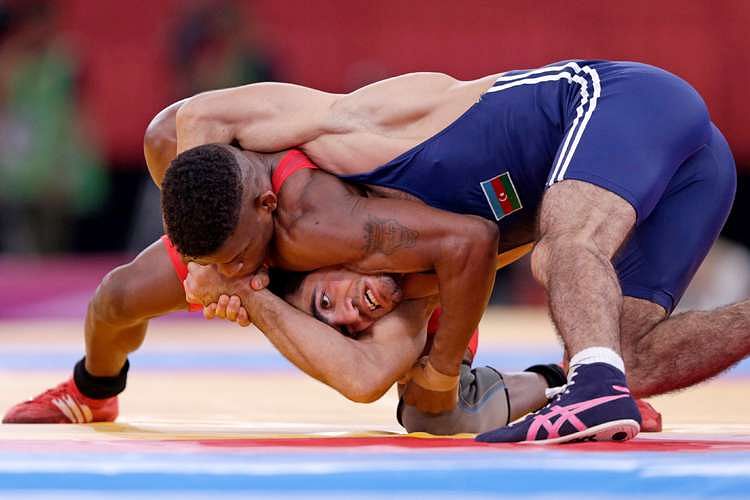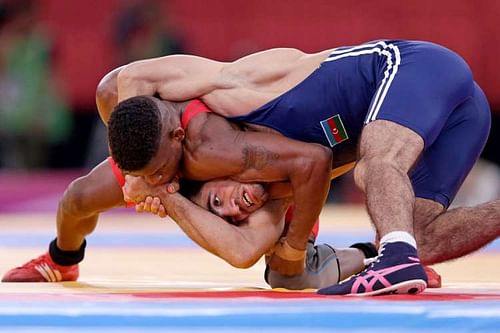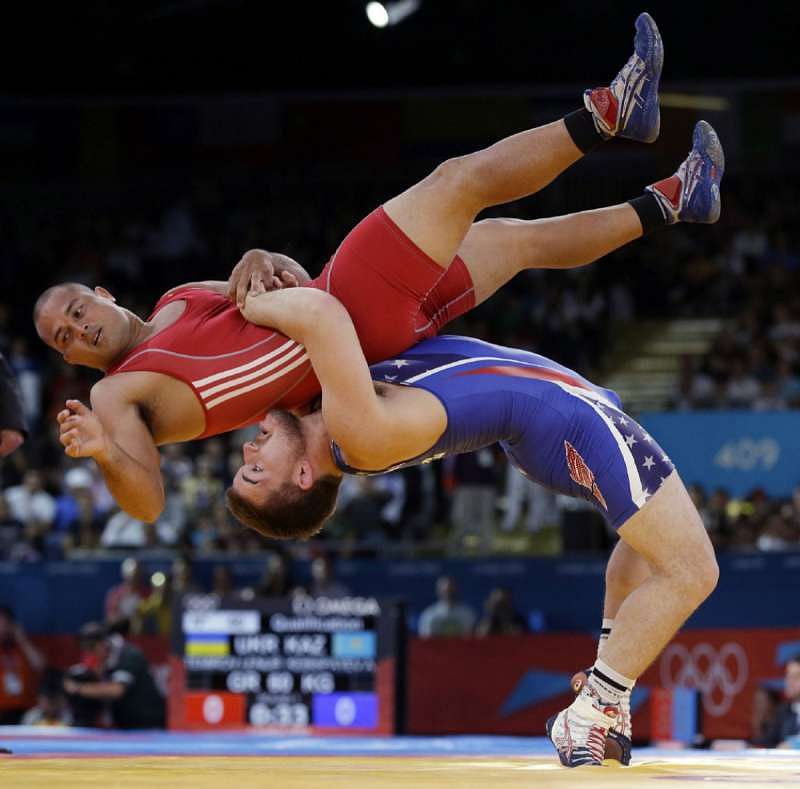
Rio Olympics 2016: How does the wrestling format work, and how do the wrestlers get points?
Wrestling is one of the oldest hand-to-hand close combat sports in the history of the world. It has been in existence since ancient times of the Greek and the Romans and continues to ride the waves of popularity even to this day.
Being such an old event has its pros and cons.
The pros include the facts that the basic structure of the game has not deviated from the original, keeping it as simple as possible and the one-word ‘wrestling” still manages to give a quick-recall of the sport to the general public.
The cons are mainly due to the fact that the small changes made to the sport over time along its long history have resulted in its fractioning into at least six distinct branches, each with its own unique style and rules. Although all of them are referred to, under the umbrella term ‘Wrestling’, each has its own proponents and only two of these styles make it to the Olympic Stage:
1) Greco-Roman Style
2) Freestyle Wrestling
Objective
The initial conditions of the match start with the two participants diametrically opposite, facing each other one meter apart. The mat itself is a thick rubber area that is shock-absorbent in nature for safety reasons and has to be new for all major competitions (regulations).
The main wrestling area is 9m in diameter with a 1.5m wide circle around it, known as the Protection Zone. Inside the main wrestling area is a 1m wide patch called the Red Zone to indicate ‘passivity’ of the participants. The central wrestling area is 7m in diameter and a further 1m diameter circle inside, represents the central circle.The central circle is further surrounded by a 10cm patch which is cut in half by an 8cm wide line.
The main objective is to pin the opponent to the ground, which is achieved by holding his/her shoulder blades to the mat for a couple seconds or so. Also called a ‘fall’, a pin ends the match automatically. A win without a pin must involve the winning wrestler accumulating more regulation point—through legal moves or techniques—than the opponent.
Although the rules for the two styles of wrestling are virtually identical, the Greco-Roman style differs from Freestyle wrestling in that the players cannot attack their opponent anywhere below the waist to execute moves or trip them. In Freestyle, the use of both arms and legs are legally allowed.
This is why a particular move called a ‘suplex’ has great prominence in the Greco-Roman style, in which the offensive wrestler lifts his opponent in the air and swings him in a high arch while falling backwards on his own neck in order to bring his opponent's shoulders down to the mat. Other popular moves include the headlock, bear hug, arm drag etc.
Format
The two styles typically consist of three two-minute sessions and are scored under regulation unless a player wins by a pin. Otherwise, the scores for the two rounds are taken on a ‘two-best-out-of-three’ format. A technical fall is designed to have a threshold of 10-point lead in Freestyle wrestling and an 8-point lead in Greco-Roman Wrestling. These are some of the new changes made to ensure more audience enthusiasm and offensive tackling.
According to UWA(United World Wrestling), the highest governing body of the sport, the new weight classes for the Olympic Games are:
Men’s Freestyle (all weights in kilograms): 57, 65, 74, 86, 97, 125
Men’s Greco-Roman: 59, 66, 75, 85, 98, 130
Women’s Freestyle: 48, 53, 58, 63, 69, 75.
Passivity
Both participants are expected to give their maximum efforts. Any hint of unsporting behaviour results in a warning and eventual penalty. Passivity becomes obvious when a wrestler:
- fails to attempt or execute any holds.
- is content to neutralise the opposition’s holds or moves.
- does not try to initiate effective holds.
- purposefully flees the mat, ‘plays the edge’ or avoids wrestling by pushing the opposition away
- prevents the opposition from wrestling
- fakes head throws again and again; slips off; falls to the mat on purpose and lies there; locks legs around the opposition’s leg.
- in Greco-Roman wrestling, engages in combat with head thrust forward preventing bodily contact.
Cautions
Cautions are penalties imposed on a player under the following circumstances:
- if a player flees the mat
- if a player flees a hold
- if a player refuses to start
- if a player performs an illegal or brutal hold

